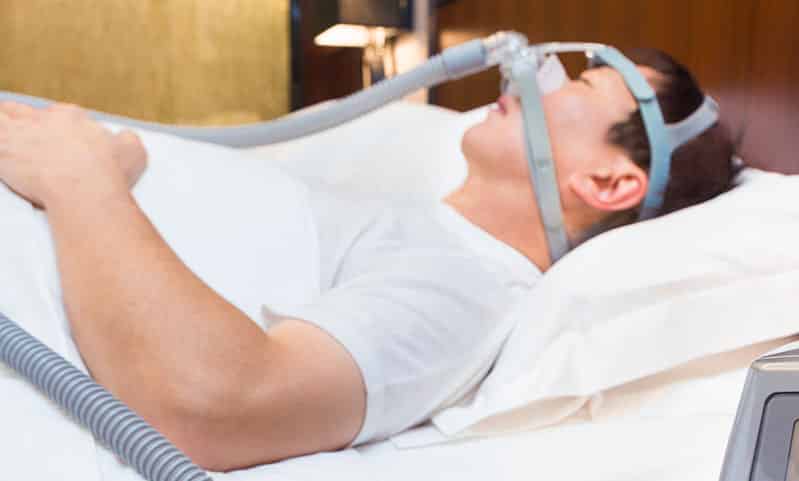About a month after the Food and Drug Administration (FDA) chided Philips for its “inadequate” recall response, lawyers from the Department of Justice subpoenaed documents in the case.
Royal Philips CEO Frans van Houten said his company was cooperating with the agency.
“They are preparing an investigation, and we just have to accept that,” he told shareholders.
At the same time, he admitted that the ongoing recall process was “a work in progress.” He said a full recall and replacement would cost the company about $180 million.
In November 2021, the FDA said Philips knew about the CPAP machine’s issues but did nothing to address the problem.
How We Got Here
For years, doctors have prescribed continuous positive airway pressure machines to treat sleep apnea.
This condition, which affects millions, closes the primary air passageway at night.
Mild sleep apnea cases are only annoying. More severe cases can be serious or even life-threatening.
This condition has indirect effects as well. People with sleep apnea, and their partners, basically doze all night. When they wake up the next morning, they’re still badly fatigued.
This drowsiness (sorry, we couldn’t resist including another Simpsons clip) makes it difficult or impossible to function.
Basically, a CPAP machine is an air compressor, a hose, and a mask.
The compressor blows air through the hose and holds the air passageway open. So, if the machine works right, many sleep apnea victims, and their partners, experience almost instant and total relief.
Previous CPAP machines often had underpowered motors that didn’t produce a strong enough air stream. Others had big, noisy motors that kept everyone awake.
Still others didn’t have necessary creature comforts. Dry air was one of the most common issues.
The Philips CPAP machine addressed all these concerns. A polyurethane foam layer kept the motor quiet, even at high speeds. Plus, this gadget was as comfortable as such a machine can be.
However, the Philips CPAP machine had a latent flaw. Regulators believe the defect was one of the following:
- Design Flaw: In the rush to bring a new machine to market, many companies don’t test them much. Perhaps the Philips CPAP machine looked good on the drawing board, and that was enough for the company to start selling it.
- Manufacturing Issue: Polyurethane foam is incredibly toxic. But as long as the foam doesn’t break up, there’s no health hazard. If the company used a cheaper foam that wasn’t as stable, tiny particles could migrate into the air hose and enter the user’s body.
In the spring of 2021, the company issued a voluntary recall after hundreds of users got sick. Lung cancer was the most common ailment.
The company promised to replace the recalled machines. But no company stays in business too long if it gives away free products. Not surprisingly, the replacement effort has been lackluster, at best.
Proving a Claim in Court
The burden of proof in a defective product claim is only a preponderance of the evidence (more likely than not). So, victims don’t need much proof to establish claims.
Almost all defective product claims involve expert witnesses. In fact, many courts require them.
Additionally, victims don’t have to prove negligence or fault, at least for liability purposes. Generally, a manufacturer is strictly liable for any illness or injury a defective product causes.
The unforeseeable misuse doctrine is one of the only effective defenses in these claims. Essentially, the manufacturer argues that the victim’s gross product misuse, as opposed to the product itself, caused injury. The misuse must be extreme.
So, in a Philips CPAP matter, simply turning the motor up too high and damaging the foam isn’t extreme misuse.
Product makers like Philips have very deep pockets. They use these resources to hire high-priced experts who refute the victim’s case. Therefore, the bare minimum amount of evidence is never enough to obtain maximum compensation.
This compensation usually includes money for economic losses, such as medical bills, and noneconomic losses, such as pain and suffering.
Additional punitive damages are usually available in defective product claims.
Injury victims are usually entitled to substantial compensation. For a free consultation with an experienced personal injury in New York, contact Napoli Shkolnik PLLC. We do not charge upfront legal fees and only recover a fee when we win your case.
